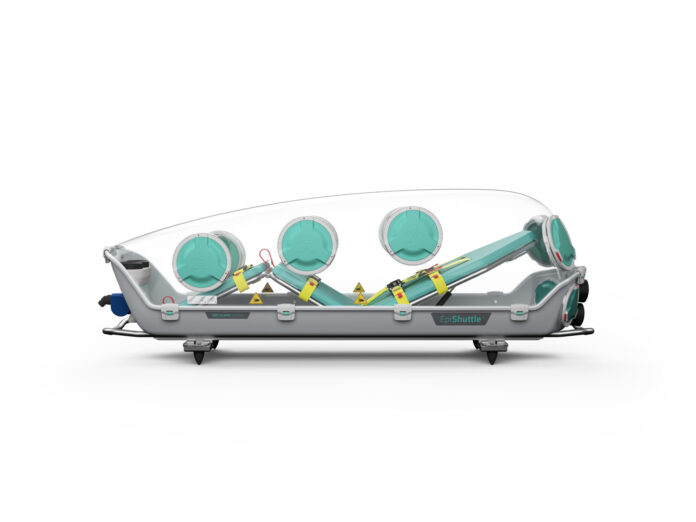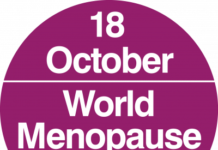With 30 EpiShuttles covering the country, the United Kingdom (UK) is at the forefront of patient isolation transport with its EpiShuttle implementation. England’s National Health Service (NHS) with their National Ambulance Resilience Unit (NARU) and Hazardous Area Response Teams (HART) have incorporated the EpiShuttle in their preparedness schemes and have created dedicated standard operating procedures (SOPs) for patient isolation transports.
How does the EpiShuttle benefit NHS England?
Thanks to its certified and functional design, the EpiShuttle helped NHS England by providing a secure environment for the transport of high consequence infectious diseases (HCIDs) and vulnerable patients. The EpiShuttle does this by being rapidly deployable and efficient, interoperable, safe, adaptable, and versatile.
Rapid and efficient deployment
In emergency scenarios such as HCIDs and Chemical Biological, Radiological and Nuclear (CBRN) events, time and efficiency are of the essence.
National preparedness schemes that involve specialised emergency service teams like HART equipped with EpiShuttles can quickly transport infected individuals to treatment facilities.
HART transferred a Monkeypox patient with the EpiShuttle from London to Newcastle’s High Level Infectious Unit (HLIU). It took 6 hours to complete the transfer but without the EpiShuttle it would have taken much longer and would have required three teams of six medics instead of just one team. Full disinfection of the vehicles involved and hospital spaces would have been needed too. This is one of the key points Nicholas Spence, NARU’s Standards Manager mentioned in a recent EpiGuard webinar:
“They (the hospital staff) like the EpiShuttle because we can take the patient all the way to the High-Level Infection Unit, and they don’t have to shut and clean down the hospital.”
Thanks to the EpiShuttle, NHS England managed to speed up and improve the transports for HCID patients while optimizing the use of human and material resources.
Interoperability
Effective communication and coordination among various agencies are vital during medical emergencies. The EpiShuttle allows seamless collaboration between emergency medical services, public health authorities, and transportation agencies.
Thanks to its certification for air travel and ground transport, the EpiShuttle opened the possibility for the British ambulance service to transport critical patients from remote areas. The NHS was able to partner up with the Royal Coast Guard, thanks to the EpiShuttle’s interoperability between the two organisation and the ground and air transport vehicles.
Integration of the EpiShuttle into preparedness plans ensures standardized approaches across all agencies in the NHS. After acquiring the EpiShuttles, NHS coordinated with various agencies by incorporating the EpiShuttle into their SOPs.
Safety
The well-being of healthcare workers is a top priority in any infectious outbreak scenario. The EpiShuttle provides a safe environment for medical professionals to administer care, reducing the risk of exposure.
One of the top challenges British medical professionals faced was the requirement to wear cumbersome Personal Protective Equipment (PPE). PPE had to be removed after every 2 hours of use, which complicated longer transports. For example, one transport longer than 5 hours would require three to four HART teams to be deployed. Not to mention the disinfection of all the vehicles, people, and equipment after the patient transport.
Before the NHS implemented the EpiShuttle, they transported patients without proper isolation, only using PPE and ventilation in the vehicles. The EpiShuttle’s isolation capabilities such as a sealed hard-top and ventilation filter system significantly reduce the risk of contagion by creating a barrier between the patient and the external environment.
Adaptability
The EpiShuttle’s adaptability allows for it to fit within the existing transport network of the NHS. The EpiShuttle is compatible with stretchers such as Stryker, Ferno, and Stollenwerk. EpiGuard has also developed universal ratchet straps for the EpiShuttle for adaptability with all other stretchers and carriers.
The EpiShuttle seamlessly integrates with other devices such as transfer trolleys, syringe drivers, and ventilators. In Nick Spence’s words:
“We found that the EpiShuttle fits nicely on that (a critical care transfer trolley) and what it means is that all the syringe drivers and the ventilators etc will fit in their system as the critical care tams are used to when treating these patients.”
Versatility
When the EpiShuttle is a part of a national preparedness scheme, its versatility allows for different patient groups to be better protected.
The EpiShuttle allows monitoring and advanced treatment to be performed during transport, including emergency procedures like intubation, IV and oxygen line insertion. These features enabled critical care transports of patients with HCIDs. This was not possible with previous solutions. The NHS has used the EpiShuttle to transfer patients from intensive care to the HLIU.
The EpiShuttle has been chosen by the NHS because of its rapid and efficient deployment, interoperability, safety, adaptability and versatility. Now the UK is better prepared and is setting the standard for national preparedness strategy.
Help keep news FREE for our readers
Supporting your local community newspaper/online news outlet is crucial now more than ever. If you believe in independent journalism, then consider making a valuable contribution by making a one-time or monthly donation. We operate in rural areas where providing unbiased news can be challenging. Read More About Supporting The West Wales Chronicle























